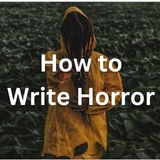Plot development
by Marisa
(Indonesia)
Hi, I've read your articles but I still confuse how to develop my plot..
My story is about a poor girl lives with her mother and crazy step-father. She wants to make a better life. She want to enter a school in capital. But the school only accept nobility. Which is better, write about the struggle of the girl to enter the school or directly about her life in the school? I also think to put her involved in the kingdom political life,revolt,some magic,and reveal secret. Should it write in trilogy or one book will suit best.
Thanks a lot for your attention and answer. :-)
Response: From what you you're telling me, the story of the girl's struggle to get into the school has dramatic potential.
You have a motivation (poverty and the crazy step-father she wants to get away from). You have conflict (the difficulties of getting into the school, since she's not from a noble family). And you have a resolution (she finally gets in).
motivation -> conflict -> resolution
That is a typical formula for a three-act story.
You should be able to build on that to create a complete story.
For instance - and this is just one way you might do it - think about your overall plot having four signposts, four important changes.
Signpost 1: She chooses to apply to the school.
Signpost 2: Her hopes are dashed when she encounters prejudice and other barriers.
Signpost 3: She makes an important choice or does something that results in her being accepted
Signpost 4: She begins school.
Running parallel to this overall story will be the main character's story, which also has four main signposts. For example...
Signpost 1: We see how the main character struggles to cope with her family and her situation.
Signpost 2: To win acceptance into the school, she is pressured to change the way she does things or to become a different person,
Signpost 3: She ultimately must choose whether to change or not.
Signpost 4: We see that, because of her decision, her relationship with her family has become much happier.
The most important connection between these two stories is that the choice the main character makes at her Signpost 3 (whether to change) will allow her to do the right thing at the Overall Signpost 3.
Again, I'm just basing this on what you told me about your story. You may have better events in mind for each of the signposts.
There are two other parallel stories that can be developed in a similar way. See this article for more detail...
https://www.how-to-write-a-book-now.com/writing-an-outline.html
If you want to tell the story of her life in school or her participation in politics, you will need a similar type of dramatic structure.
It's up to you to decide which of these stories has the most potential, which one will have the biggest emotional impact on the reader. In the end, you will have to choose the one that you feel most strongly about.
While it is fine to have ideas for other books about this character in mind, focus first on getting one good book written.
Comments for Plot development
|
||
|
||
|
||
|
||
- Home
- Plot Questions
- Plot development










